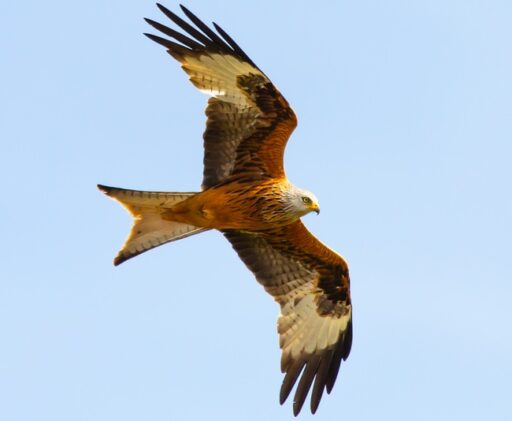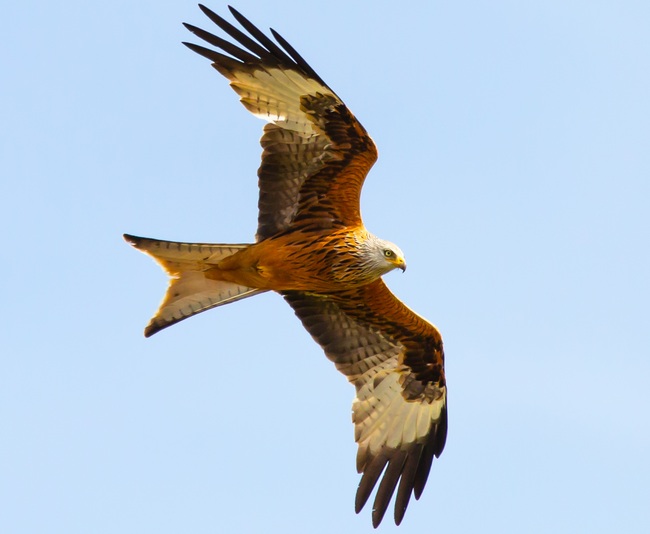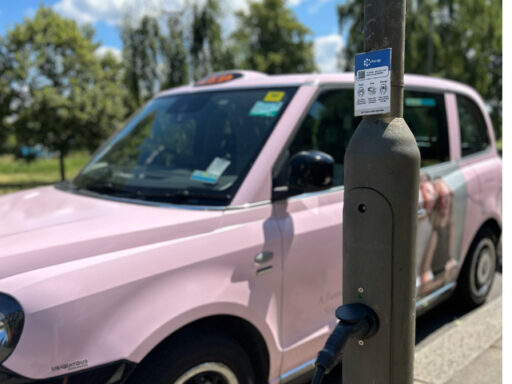- A report by conservation group Wild Justice claims that the exposure of birds of prey to rodenticides in England has risen since the government introduced the Rodenticide Stewardship Scheme (RSS) in 2015 to tackle this issue.
- Data collected from Red Kites and Buzzards, covering periods both before and after the RSS’s introduction, indicate that anticoagulant rodenticides are frequently found in the livers of deceased birds, often at high concentrations.
- Between 2020 and 2022, nearly 75% of Buzzards tested had ingested rodenticides intended for use strictly in or around buildings, including the highly toxic compound Brodifacoum. Wild Justice argues that this indicates misuse of rodenticides and calls for stricter regulation, monitoring, and enforcement.
A new report by Wild Justice reveals that most dead Buzzards and Red Kites tested now show evidence of rodenticide in their livers.
The findings, published in Wild Justice’s ‘Collateral Damage’ report, use data obtained via Freedom of Information Requests, compiling government test results for 366 Buzzards and 173 Red Kites submitted to England’s Wildlife Incident Investigation Scheme (WIIS) from 2005 to 2022. Recent tests show that nearly all these raptors had significant rodenticide levels.
Rodenticides, or Second Generation Anticoagulant Rodenticides (SGARs), are extensively used in agriculture, pest control, and gamekeeping. These toxins don’t only kill target species like Rats, but can poison predators like Buzzards and Red Kites who consume the poisoned rats, causing deaths up the food chain.
In 2012, the UK Health and Safety Executive conducted an environmental risk assessment on SGARs, concluding that due to the risk of secondary poisoning to wildlife, these poisons should be restricted from outdoor use. Wild Justice alleges that the government rejected these findings, allowing SGARs to continue being used outdoors, even expanding outdoor permissions for highly toxic poisons like Brodifacoum.
The RSS, launched in 2015, aimed to reduce SGAR exposure in wildlife through improved pest control practices. However, Wild Justice’s findings suggest that rodenticide exposure has only increased since its introduction.
Comparing birds tested before and after the RSS launch, Wild Justice found that between 2005 and 2010, more than half of the tested Buzzards had no rodenticide in their livers. In contrast, between 2020 and 2022, over 90% of Buzzards contained some level of rodenticide.
The data also show an increase in very high levels of poison in Buzzards. Between 2005 and 2010, less than 2% of tested Buzzards had over 0.3mg/kg of SGAR poison in their livers, but this rose to nearly a quarter of tested Buzzards between 2020 and 2022.
The trend was even more pronounced for Red Kites. Of Red Kites tested between 2005 and 2010, 15% contained these high poison levels, while 66% of those tested between 2020 and 2022 exceeded 0.3mg/kg. By 2022, nearly 90% of tested Red Kites had very high poison levels.
Rodenticides remain widely accessible to both commercial and domestic users. Many of the Buzzards tested had exposure to multiple poisons, with some showing traces of four different rodenticides. Wild Justice suggests that these poisons are frequently used illegally outdoors, which would explain their prevalence in Buzzards and Red Kites, and is calling for stricter regulation and enforcement.
Buzzards and Red Kites serve as indicators of a wider problem impacting other birds and predators, including species such as Kestrels and Barn Owls. Wild Justice is urging urgent changes to regulations to protect wildlife from widespread poisoning.
A spokesperson for Wild Justice stated: “The Rodenticide Stewardship Scheme is a failed scheme, which the government should recognise. It is ridiculous that such dangerous, hazardous substances are escaping stricter regulation, especially when the evidence shows they are poisoning wildlife on a widespread scale, and even being used deliberately and illegally to do so. Our report reveals just the tip of the iceberg – such high levels of these poisons being found in birds of prey should be ringing alarm bells.”






